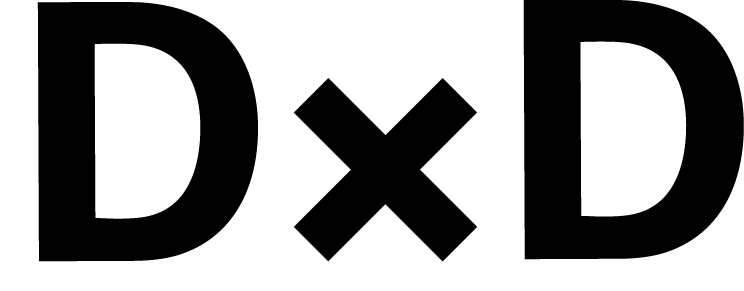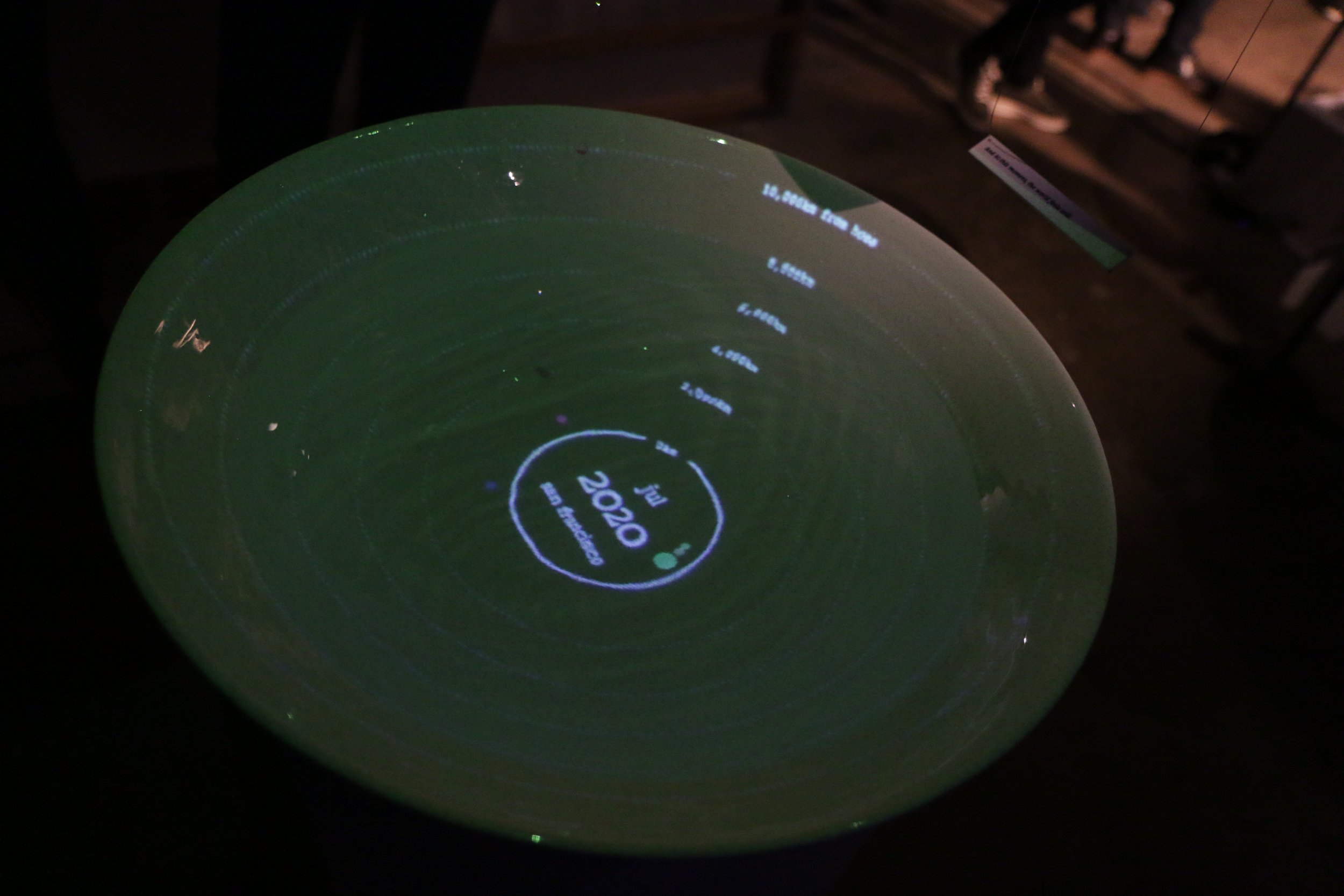Data Through Design 2023
In March 2023, DxD presented our sixth exhibition at Prime Produce featuring nine works under the theme Hidden in Plain Sight. Projects explored the smaller stories and voices that are hidden by the wider narrative as told by big data, and covered a broad range of datasets including recorded taxi rides, storm flood predictions, bike accidents, and reported missing people.
Theme: Hidden in Plain Sight
The intention of most datasets is to tell a story about the collective: they are designed, collected, and analyzed with a question about “the whole” in mind, smoothing over individualities and compacting lived experiences into a singular tale of “us.” 2023’s theme Hidden in Plain Sight asked artists to complicate data trends and commonly held narratives, search for missing people/places/things in data, investigate anomalies and outliers, and draw back the curtain on the “invisible hands” that shape data to expose, question and engage the perspective and motives behind data collection.
2023 Projects & Artists
N.Y. sea
Kerrie O'Leary
N.Y. Sea uses historic recordings of the NYC river levels in conjunction with storm flood water predictions to communicate the vulnerability of the New York subway system. Merging her curiosity for systems and physical computing components, the artist has manipulated the complex data into a kinetic sculpture that forces the viewer to contemplate the strength of nature and question their existence in the anthropocentric era.
Hidden Layers | The Voices that Shape NYC Zoning
Block Party: Sarah Sachs, Becky Xu, and Sourabh Chakraborty
Hidden Layers is an immersive art experience that explores the dynamic landscape of New York City's housing crisis and zoning decisions. The gallery offers a unique perspective into these complex issues by distilling the transcript data from Community Board meetings, uncovering the stories behind major rezoning projects such as Inwood, Gowanus, and Soho/Noho. The text analysis illuminates key themes that emerge from these discussions, providing insight into the defining characteristics of each neighborhood. The large-scale maps contrast data on affordable housing units and housing values, highlighting the challenges and opportunities facing New York's diverse neighborhoods.
Our mission at Block Party is to enhance the accessibility of information and to enable community engagement in local democracy. We source the transcript data directly from online recordings of Community Board meetings through our independent civic technology initiative. Block Party's structured dataset of public forum transcripts spans NYC districts and city agencies, providing a novel resource for exploring themes, advocacies, and challenges at a hyper-local level. Join us in exploring this vibrant and complex landscape and share your own perspectives on the future of housing in our city.
A Matter of Air
Katrin Bichler, Aurelie Barbier, Aron Cohen, and Julie McEldoon
We are all impacted by the air we breathe. Air pollution in New York has contributed to approximately 3,000 deaths and 2,000 emergency department visits and hospitalizations annually. However, the quality of this air, the particles we find in it, and how vulnerable we are to it drastically depend on which neighborhood we live in.
This installation gives you a live experience of the New York Community Air Survey (NYCASS) and its findings. Since 2009 the survey monitors street-level air pollution and attributable health events for the 42 UHF (United Hospital Fund) neighborhoods of NYC.
The monitoring has led to regulations that have improved air quality all over the city. However, these improvements are not felt equally. While pollution hotspots have decreased, some neighborhoods are still feeling the impacts. Are the communities with the highest air pollution experiencing the worst health impacts, or are there other factors at play?
Kindling
Zeana Llamas, John Noonan, Forest Eckhardt
Kindling is a dating app inspired interactive experience designed to initiate relationships between New Yorkers and the city’s unique local street trees. With this new relationship we hope to foster an interest and appreciation for the often overlooked green spaces that are New York City’s street trees.
Holobiont Urbanism 2022: Be(e)yond What Meets the Eye
Living Interfaces Lab: Elizabeth Henaff, Sheila Atieno, Tori Coleman, and Andrea Sanchez
Holobiont Urbanism 2022 is a hive object to map the unseen microbial network linking the natural and built environment of NYC. This installation integrates metagenomic data collected from honey bees with NYC Open Data entitation dataset from Forest Park to investigate environmental relationships that elude typical awareness. Explore each level of the hive object to discover different maps of NYC drawn collaboratively by human, microbe, and honey bee.
Nestled in the bottom-most hive box is the second edition of the Gene Zine: Micro News Biome Letter. Take a copy back to your ‘hive’ and re-imagine the ways you experience the microbial and built environment.
wonder
Shirley Wu
wonder is a data story in two parts: the first is a visualization of four years (2018–2022) of my photos projected over water, and the second is captured by water drips, with each drop representing an anti-Asian hate crime reported in New York City.
As a Chinese-American woman, I was deeply affected by the reports of anti-Asian hate crimes that exploded in 2020. A year later, I realized that I had lost all my wonder for the outside world, and was instead filled with paralyzing fear whenever I had to walk outside by myself. I have always used data to understand the world, so this time I turned to data to understand myself: I looked through 21,000 of my photos and where they were taken—the most concrete dataset I have of my time outside—and found both the joy I used to feel pre-covid, and the drastic drop in their numbers after. And as the animation progresses through the pandemic years, water drips to distort the visualization.
With wonder˛ I explore the relationship between intangible external forces and their influence on my internal well-being. And in the space between water drips, I hope to remind us of the cases that were never reported, never captured.
Los Delivreros
Ambar Reyes
There are around 65,000 delivery workers in NYC, according to the U.S. government. With their distinctive bags to carry food on their shoulders, colorful e-bikes covered with Latin American flags, and speakers playing songs in Spanish, they have come to occupy a remarkable space—visually and auditorily—on the streets of Manhattan. With my project, I aim to juxtapose NYC's public data regarding the number of accidents involving a cyclist with delivery workers' private information about spatial distribution in New York City. With this, I want to understand how delivery workers' presence in the streets has changed the city's rhythm and everyday life soundscapes and how the city infrastructure has changed delivery workers' daily life.
Disappearing Data
Tara Lee Burns
From its inception, the NYCEM Emergency Notifications dataset lists 863 reports of missing persons with dementia and/or Alzheimer's Disease. 101 people with dementia and/or Alzheimer’s were reported missing in NYC in 2022. Each projected panel highlights a fragmented artifact—a location, faded photograph, or description—of one of 41 missing people with dementia and/or Alzheimer’s in the NYCEM Emergency Notification dataset between August 2 and December 25, 2022.
Having familial ties to someone with Alzheimer’s, I’ve witnessed firsthand the fading of a loved one with the disease. Pulling from the data, this work aims to visualize a small portion of the loss experienced by someone with this disease and the loss faced by their loved ones. These people are in all senses of the word ‘missing’—the continual repetition of the fading of their memories, abilities, and independence.
Participants are asked to enter a trackable area in front of the projection that will fade the panels in and out depending on the audience’s coordinates in space. The continual dimming of the panels affected by passersby represents the ephemerality of the mind of a dementia patient, the disappearance of the knowledge of their location, self, and the people around them. These missing people were entered into this dataset, but they never leave. There is no information on their found state, they are forever missing and their fate is the same—continually deteriorating—disappearing data.
This work is dedicated to Kirk, Livi, Charles, and Alexandra.
Where are we going?
Susan Steinfield
Where are we going? imagines where we may have been going in the first minute of the new year through the first 100 yellow taxi ride trips. We often assume that data is cold and scientific, a solid block of self-contained and complete information. Instead, I assume it to be porous, full of narrative potential. This piece invites the viewer to invent their own stories and project themselves onto these pathways.
Sponsors
NYC Mayor’s Office of Data Analytics
Pratt SAVI
Pratt Academic Senate - Academic Initiatives Fund
Brooklyn Arts Council
2023 DxD Organizers
Can Sucuoglu, Justin Roberts, Jack Darcey, Jessie Braden, Julia Bloom, Rachel Daniell, Sara Eichner, Sofia Martynovich, Jen Ray, Wenfei Xu
Photography by Yuko Kudo and DxD organizers










